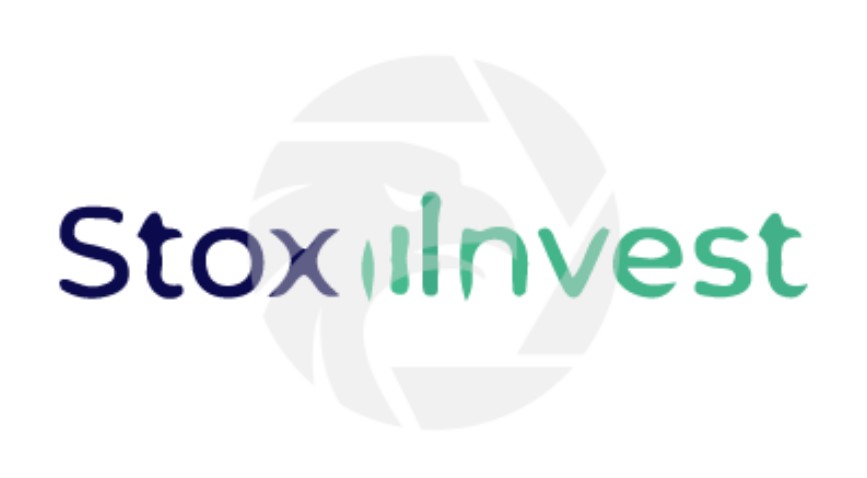StoxInvest.com Scam Review -A Dubious Platform
StoxInvest.com presents itself with the visuals and language of a modern trading service, but it raises multiple practical warning signs that align with high-risk or deceptive broker models. The combination of opaque ownership signals, promotion-heavy messaging, unverifiable performance claims, and operational tactics that historically lead to withdrawal friction creates a risk profile investors should treat as elevated.
Opening — the smooth pitch that short-circuits doubt
Late one evening you click a promoted post: “Start trading with StoxInvest — AI signals, guaranteed access, premium support.” The landing page is clean, customer testimonials glow, and a chat window offers to connect you with a personal account manager. It feels efficient, almost reassuring — the exact environment that encourages quick decisions.
That initial smoothness is the deliberate first step for many risky operations: build trust fast, then accelerate deposits. What matters is what happens next. When the basics of accountability and transparency are missing, that initial comfort can quickly curdle into confusion and frustration. Below I break down the concrete signals that make StoxInvest.com a platform to examine closely before committing funds.
1) Presentation vs proof — polish isn’t the same as pedigree
StoxInvest.com uses modern fintech design, confident copy, and visual proof points (charts, testimonials, account tiers). Those elements convert well — but conversion is not the same as credibility. Real financial services layer their marketing with verifiable proof:
-
A clear legal company name and registration details.
-
Licence numbers and the regulator(s) that supervise them.
-
Exportable trade logs, audited performance, or verifiable transaction receipts.
When a site emphasizes sleekness and results but does not make those proofs immediately and easily available, the visual attractiveness becomes a potential mask for missing fundamentals.
2) Ownership and traceability — who’s responsible?
Accountability starts with knowing who runs the platform. For any trustworthy broker or investment service, you should be able to locate:
-
The legal entity name and registration number.
-
A physical office address and verifiable contact channels.
-
Named executives or compliance officers with traceable backgrounds.
If StoxInvest.com obscures ownership details (privacy-masked domain registration, vague corporate listings, or unverifiable addresses), that opacity is a practical red flag. It makes legal recourse or regulator contact difficult and raises the possibility that the operation is designed to be hard to track.
3) Regulation — the safety net that matters
A core distinction between legitimate and risky platforms is regulatory oversight. Licensed firms operate under rules that mandate client fund handling, audits, disclosures, and complaint procedures. Responsible brokers publish licence numbers and let users verify them.
When a platform lacks clearly published, verifiable regulatory credentials, the protections that underpin long-term trust are absent. In that environment, common consumer safeguards (segregated client accounts, compulsory reporting, dispute resolution pathways) may not exist or be enforceable — a material change in risk calculus for anyone placing capital.
4) The deposit-withdrawal asymmetry — the operational litmus
One of the most telling tests for any financial operation is how it treats money going in versus money coming out:
-
Easy in: deposits are typically processed quickly with multiple payment options.
-
Hard out: when users request meaningful withdrawals, new conditions, surprise fees, or lengthy “verification” loops appear.
This asymmetric behavior — frictionless deposits, obstructed withdrawals — is a hallmark of many problematic platforms. If StoxInvest.com exhibits this pattern, it indicates the business is optimized for capital intake rather than reliable client payouts.
5) Sales pressure & VIP upsells — the persuasion machinery
A consistent pattern among risky operators is the use of personalized persuasion after signup:
-
Quick assignment of an “account manager” or “personal advisor.”
-
Repeated outreach encouraging account upgrades or larger deposits.
-
Promises of higher returns for VIP tiers or “exclusive” strategies.
-
Scarcity language (limited slots, time-sensitive offers) that pushes fast decisions.
These techniques are designed to increase lifetime value per user rapidly. When combined with anonymity and lack of regulation, they materially increase the probability of poor outcomes for investors.
6) Performance claims and testimonial hygiene
StoxInvest.com may show screenshots of rising balances, client success stories, and backtest-like charts. Those are effective marketing tools, but persuasive imagery isn’t the same as auditability. Real evidence of a trading strategy’s reliability includes:
-
Third-party audits or attestations.
-
Exportable trade histories that match account statements.
-
Blockchain or banking receipts that prove trades and deposits.
-
Long-running, independently verifiable user reviews.
Without that kind of corroboration, dashboards and testimonials function chiefly as conversion elements, not proof of sustainable trading performance.
7) Terms, fees and legal levers — what to read closely
Small print matters. Problem platforms often include contract language that gives them wide unilateral powers:
-
Clauses allowing the operator to freeze or close accounts at will.
-
Ambiguous “processing” or “release” fees that can be applied retroactively.
-
Bonus terms that lock funds until trading volume targets (often unrealistic) are met.
If StoxInvest.com’s terms permit the operator broad discretion over funds or add conditions that only appear at withdrawal time, that legal structure is engineered to create friction when users try to exit.
8) Technical indicators — domain and infrastructure cues
Technical signals provide additional context:
-
Domain age: recently registered domains have less trustworthy track records.
-
WHOIS privacy: masked registrant data makes operator identification difficult.
-
Hosting patterns: shared hosting with known short-lived sites hints at template-driven rollouts.
-
Traffic & visibility: low organic presence and few independent references suggest limited credibility.
Alone these signals aren’t conclusive, but they change the statistical odds when combined with the behavioral and policy red flags above.
9) The human impact — why these patterns hurt people
Beyond technical checks, consider the real effects on people who face withdrawal barriers: lost time, stress, reduced savings, and sometimes irreversible financial harm. Early synthetic gains shown on dashboards can push people to deposit more, compounding exposure when access to funds becomes restricted. The ripple effects extend beyond balance sheets — they undermine trust and create real-world hardship.
10) Quick red-flag checklist
Use this condensed checklist to assess StoxInvest.com (or similar platforms):
-
Is the legal entity and registration number clearly published?
-
Can you verify a regulator licence in a recognised jurisdiction?
-
Are performance claims supported by exportable trade logs or audits?
-
Do withdrawals occur reliably without ad-hoc “release” fees?
-
Are account managers pressuring you to deposit more?
-
Is domain ownership masked in WHOIS records?
-
Are testimonials corroborated on independent forums?
Multiple “no” answers indicate elevated risk.
Final analytical conclusion
StoxInvest.com displays many of the practical warning signs that have accompanied problematic online investment platforms: polished marketing paired with operational opacity, strong upsell mechanics, and the potential for deposit/withdrawal asymmetry. While no single indicator proves wrongdoing, the convergence of these signals creates a materially elevated risk profile.
This assessment is a risk-based analysis rather than a legal determination. For anyone considering this platform, the fundamental question is whether the site demonstrates the transparent, verifiable credentials that trustworthy financial services provide. Where those proofs are absent or difficult to verify, the prudent interpretation is that exposure to loss is materially higher.
Report StoxInvest.com Scam and Recover Your Funds
If you have lost money to StoxInvest.com Scam, it’s important to take action immediately. Report the scam to Jayen-consulting.com, a trusted platform that assists victims in recovering their stolen funds. The sooner you act, the better your chances of reclaiming your money and holding these fraudsters accountable.
Scam brokers like StoxInvest.com continue to target unsuspecting investors. Stay informed, avoid unregulated platforms, and report scams to protect yourself and others from financial fraud.
Stay smart. Stay safe.






